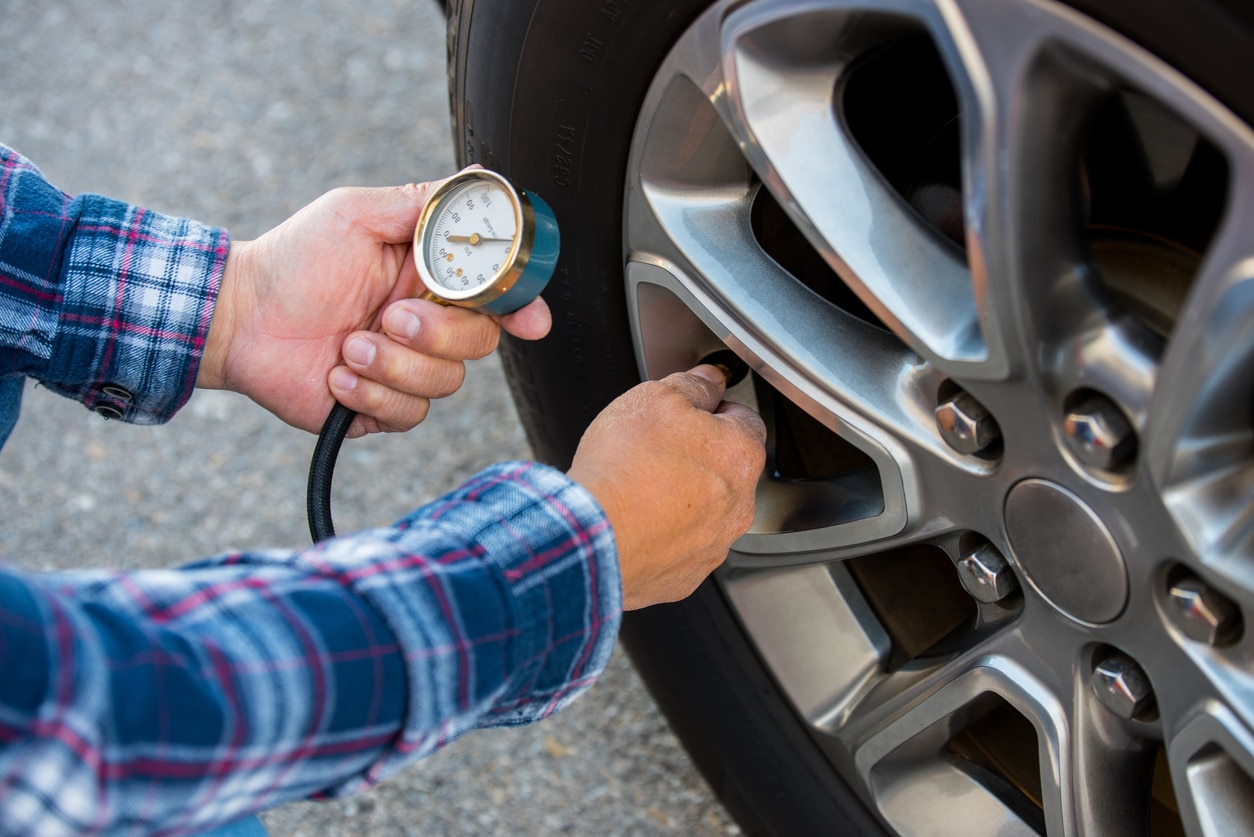
Checking tire pressure before the weather gets cold is something you should do to prevent issues from arising later. Your tires can play a big role in fuel efficiency and road safety. Low air pressure can have drastic results that cost money and peace of mind. While tire pressure tends to decrease naturally with use, a few factors can cause a sudden shift.
Checking Tire Pressure: Do It While It Matters
Understanding these factors helps you keep tires at the correct pressure and avoid problems on the road.
Why Is Tire Pressure Important?
Tires have an optimal pressure range; being outside this range can impact fuel efficiency and rate of wear. Tread provides grip, giving drivers greater control over their vehicles. Tread less than 2/32nds of an inch tall doesn’t provide adequate traction, increasing the likelihood of accidents. Both over- and under-inflated tires contribute to excessive wear.
What Factors Impact Tire Pressure?
Temperature plays a huge role in tire pressure, impacting air volume. Molecules of various gasses make up air; the movement of those molecules depends on the temperature. At higher temperatures, the molecules increase speed, taking up more space. At lower temperatures, they decrease speed, making up less space. As a result, drivers should pay greater attention to their tire pressure as the seasons’ change, or they enter a new climate.
How Do You Check Tire Pressure?
Checking tire pressure is relatively easy, even if you’ve never done it before. Before you start, you need a gauge to measure the pressure per square inch, also called PSI; you can find these tools for as little as a few dollars. There are three types of pressure gauges:
• Dials
• Digital
• Stick-type
All three work the same way; the difference is the readout.
To check your tire pressure, first, remove the air valve cap. Next, press the gauge against the valve stem to allow air to enter the tool. In stick types, the air will push the stick, and you can read the measurements along the side. Dials and digital models work similarly. Your tire pressure should be anywhere between 30 and 35 PSI.
Does Auto Insurance Cover Tires?
Tires eventually wear down over time, and replacing them is expensive. Understandably, you may wonder if your Massachusetts auto insurance covers them. Unfortunately, most auto insurance doesn’t cover natural wear and tear. However, many tire manufacturers offer warranties that cover the following:
• Road hazards
• Premature wear
• Factory defects
That’s not to say that car insurance required in Massachusetts never covers tire damage — comprehensive and collision policies may pay for damage caused by vandalism, accident, or theft.
How Can You Make Your Tires Last?
In addition to monitoring air pressure, you can extend the life of your tires by rotating them regularly. Rear tires don’t wear as quickly as the front ones, leading to uneven tread. If you don’t rotate your tires, you’ll have to replace the front ones more often, and you may have a less comfortable driving experience.
About EJ O’Neil Insurance Agency
Since 1898, EJ O’Neil Insurance Agency has provided homeowners with reliable coverage and high-quality customer service. Today, we offer a variety of policies, including commercial, boat, automobile, homeowners, motorcycle and renters insurance. Quotes are free by phone or online request, and we can provide notary and other services at our location. We pride ourselves on caring for customers when they need it most, proving it with over $3.2 million in claims paid over 12 months. To find the right coverage for your need, call 413-594-4757 or visit us online.
